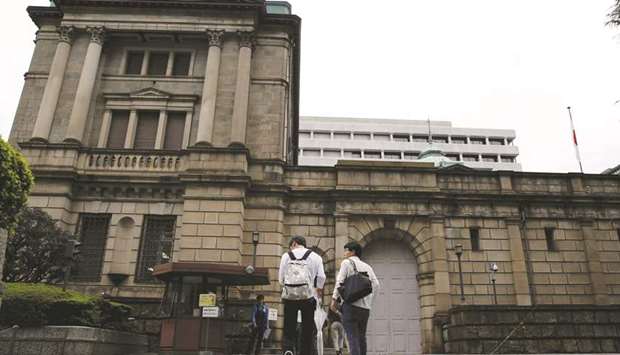In the so-called BoJ trade, investors buy government bonds at auction, only to sell them on to the nation’s central bank at a premium. The switch in May to a T+1 settlement cycle now allows buyers to flip the bonds after just a day, rather than keep the debt on their books as they had previously.
The switch means “it will be easier to do the BoJ trade,” said Takenobu Nakashima, quantitative strategist at Nomura Securities Co in Tokyo. “With the shorter settlement cycle, newly-issued bonds will trade in the secondary market briefly before the BoJ buys them.” This suggests there may be more days with no trading, he said.
Japan’s ten-year notes didn’t trade at all on June 13, for the second day this month and the fifth time this year.
The availability of tradeable bonds is increasingly scarce in Japan as the BoJ continues to buy up government debt under its yield curve control policy. That’s hurt dozens of small and medium-sized regional banks that have depended on JGBs as a reliable way to secure decent returns on their deposit bases, helping fill a gap left as Japan’s hinterland depopulated, leaving fewer households and companies for lenders to extend credit to.
The central bank already holds more than 40% of JGBs, according to its data, purchasing bonds to hold the 10- year yield close to its zero% target. Overall, trading volumes in JGBs were down 58% last quarter on average compared with 2012, the year before the BoJ unleashed a massive step-up in its bond buying. There may be more days to come when the 10-year bond doesn’t trade, according to Shuichi Ohsaki, chief rates strategist for Japan at Bank of America Merrill Lynch Securities. An expected increase in the BoJ trade may be one factor although the lack of incentives is the biggest reason, he said.
“Diminishing expectations for yields to rise have sent them to the lower end of ranges that make investors think twice about buying, while sellers continue to be absent,” Ohsaki said. “Liquidity isn’t as dire as people think, but price ranges are steadily getting narrower.” This may be spurring smaller transaction sizes, he said.
At a semi-annual meeting between bond market participants and the BoJ earlier this month, some attendees expressed concern about the impact on the efficient functioning of the market from the drop in liquidity, according to minutes released on Thursday.
Still, the increased demand for the BoJ trade comes at a price – a lower profit margin available to investors. Traders who bought 10-year JGBs at auction for ¥100.38 ($0.91) on March 1 were able to sell them on to the central bank on March 19 at ¥100.67, booking a ¥0.29 profit. That premium shrunk to ¥0.06 for a similar trade this month.
“Bonds can be bought immediately by the BoJ so there won’t be premiums at auctions for holding bonds longer after issuance,” said Souichi Takeyama, rates strategist at SMBC Nikko Securities. “Auctions will tend to be strong as dealers seek to secure bonds for BoJ operations, and with a certain degree of anticipated selling to the BoJ, the profit margin will become thinner.”
Furthermore, the trade only works if the BoJ is there to buy the bonds, making any potential tapering of its asset purchase programme a risk to investors. In fact, if lower liquidity reduces JGB volatility and keeps pressure on yields that might tempt the central bank to ease back on its purchases, according to analysts.
“One purpose of yield curve control is to prevent a sharp drop in yields through steady tapering,” Nakashima of Nomura said.



